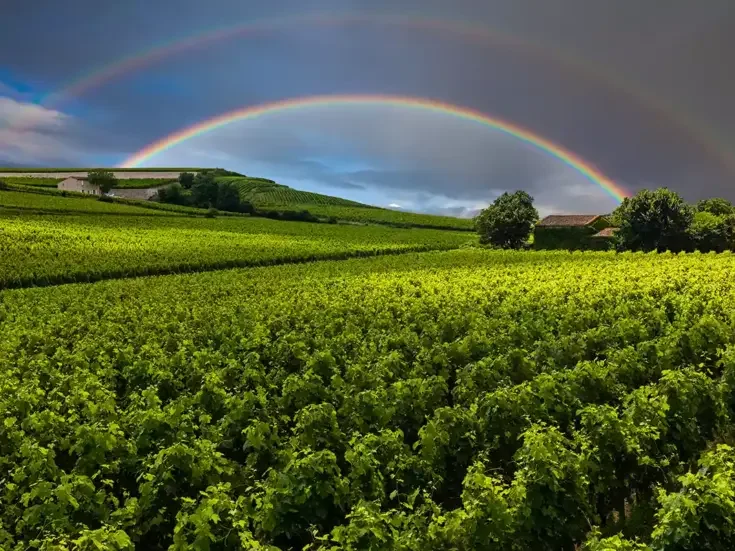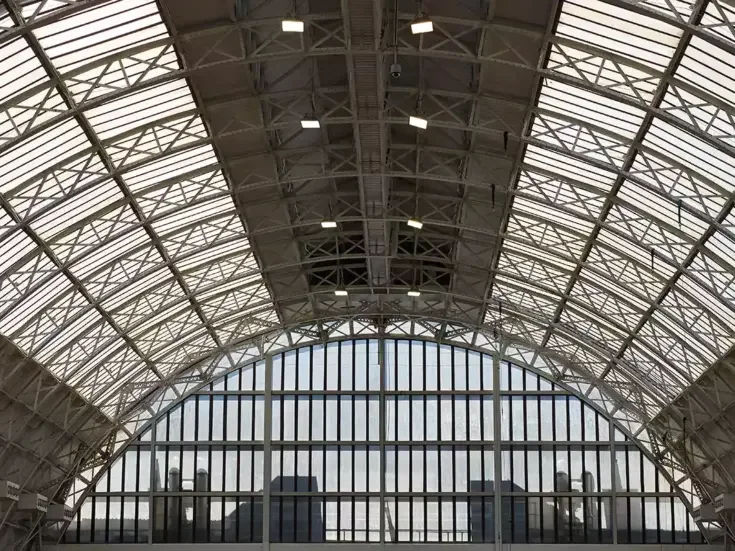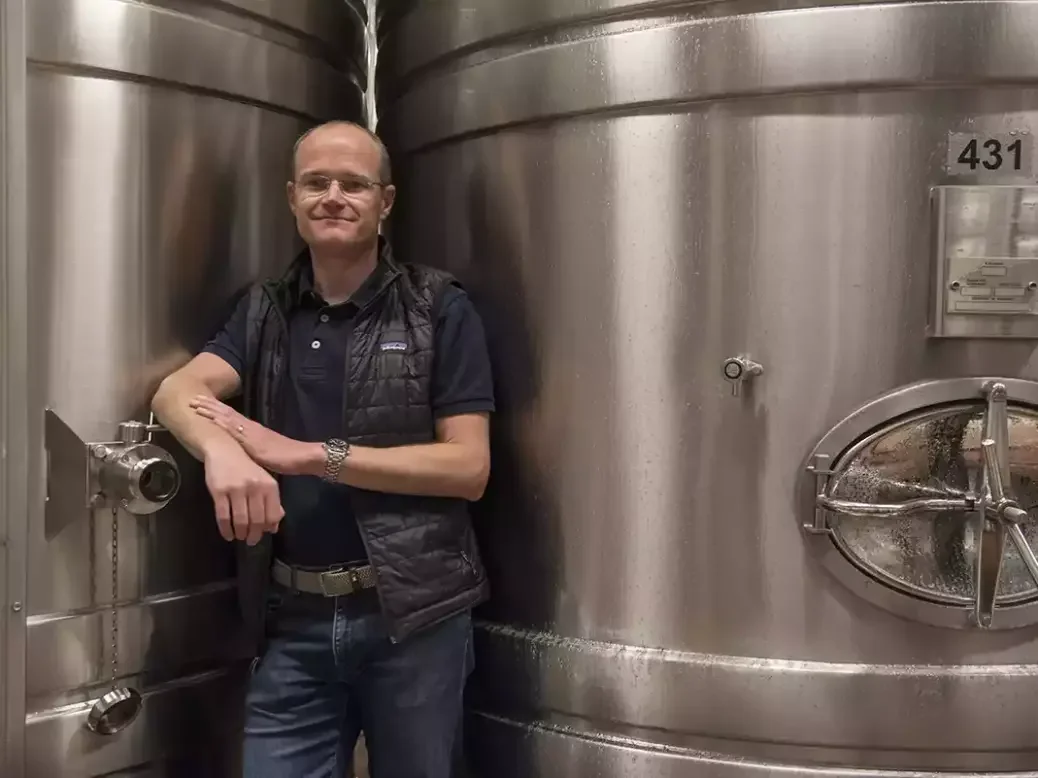
There is nothing new about vineyards changing hands in Burgundy. Were it so, much of Burgundy would still belong to the Church. Nor does the acquisition of choice vineyards by outside investors—luxury brands, banks, insurance companies, or wealthy individuals—cause more than a light ripple of surprise. But several recent sales, mergers, and reshuffles of vineyards merit more than a raised eyebrow because of the importance of the appellations traded.
In September 2022, French billionaire François Pinault, owner of Château Latour and other distinguished wine estates, extended his influence in Burgundy from his holdings in the Côte de Nuits (Clos de Tart in Morey-St-Denis and Domaine d’Eugénie in Vosne-Romanée) to the Côte de Beaune, as his wine company Artémis Domaines merged with Maisons et Domaines Henriot. The latter included Bouchard Père & Fils and Domaine William Fèvre in Burgundy, together with Maison Henriot in Champagne and Beaux-Frères in Oregon—“A partnership in which Henriot is a minority partner and all the important decisions will be made by Artémis,” explains Vincent Pépin, recently appointed commercial director for Bouchard Père & Fils.
Within the Henriot portfolio, Domaine Bouchard, with its extensive land holdings in the Côte d’Or, was the main prize. Henriot Champagne was quickly disposed of to Terroirs et Vignerons de Champagne, while Fèvre was put quietly on the market. Why? Because the Fèvre family held onto their vineyards when they sold to Joseph Henriot in 1998—an arrangement that doesn’t align with Artémis’s approach to vineyard ownership. And so, on January 9, 2024, William Fèvre was sold to Domaines Barons de Rothschild Lafite (DBR Lafite).
By the same token, Bouchard Père & Fils’s Burgundy négociant wines will be phased out as grower contracts expire, though Pépin says this could take up to seven years in a few cases. “We see Bouchard as a sleeping beauty. It has amazing terroir and great potential. The treasures were lost within the négociant wines.”
In my book, Frédéric Weber had already increased quality significantly over the decade since he took over the winemaking role; no mean feat for the technical director of a house that, at the height of its négociant activity, purchased fruit from the Côte de Nuits to the Mâconnais and made almost 90 cuvées. “Historically,” says Weber, “the négoce part was more than 75 percent of our activity. In 2022, it was 15 percent, and in 2024 it will be zero. With Artémis, we will exclusively focus on our own domaine, which, as you know, is exceptional in the Côte de Beaune and the Côte de Nuits.” It certainly is, as the largest owner of grands and premiers crus on the Côte d’Or, which brings me back to my earlier point—the sheer grandeur and scale of the vineyards recently reshuffled.
Domaine Bouchard Père & Fils is the largest owner of Chevalier-Montrachet. It has 2.33ha (5.7 acres) of the grand cru, with a further 0.21ha (0.52 acre) of vines in lieu-dit La Cabotte, a choice parcel of Chevalier directly above Montrachet. Of Montrachet, there is 0.89ha (2.2 acres) and of Bâtard-Montrachet, 0.8ha (1.97 acres). Serious stuff. On the hill of Corton, Bouchard has just over 7ha (17 acres), split pretty evenly between Corton-Charlemagne and red Corton. And while we’re talking grand cru, Bouchard is not lacking in the Côte de Nuits either, owning 0.15ha (0.37 acre) of Chambertin, 0.24ha (0.59 acre) of Bonnes-Mares, 0.45ha (1.1 acres) of Clos de Vougeot, and 0.39ha (0.96 acre) of Echézeaux, together with a couple of excellent premiers crus: 0.25ha (0.62 acre) of Gevrey-Chambertin Cazetiers (a personal favorite) and more than 1ha (2.47 acres) of Nuits-St-Georges Les Cailles (another premier cru worthy of your attention).
Domaine Bouchard is more widely recognized, however, for its range of wines from the Côte de Beaune, where it has substantial vineyard holdings in Beaune itself, including the premier cru monopole Clos Landry (1.98ha) [4.9 acres], planted to Chardonnay) and a huge 4ha (10 acres) of its most celebrated red premier cru, Beaune Grèves Vigne de l’Enfant Jésus, though for me it vies for this position with Volnay Premier Cru Caillerets Ancienne Cuvée Carnot, where Bouchard also has an eye-popping 4ha. Frédéric Weber tallies it all up: “More than 106ha [260 acres], from the Clos Vougeot, to the Montrachet.”
Shuffling and focusing
But things are changing. Under the new regime, Bouchard’s Côte de Nuits vineyards are on the move to Domaine d’Eugénie, where, in 2023, the Bonnes-Mares, Cazetiers, and Chambertin were vinified. The remainder, including some village wine, will be vinified this coming vintage in the small winery previously used by Bichot’s Domaine du Clos Frantin in the center of Vosne-Romanée. I imagine Eugénie’s winemaker Michel Mallard will find it a tight squeeze. It will be interesting to taste the new cuvées, but it’s reasonable to expect some changes there, since every winemaker has his or her own touch.
This will allow Domaine Bouchard to be more focused. Pépin defines the boundaries and aspiration. “Bouchard is an iconic domaine in the Côte de Beaune, from Puligny to Aloxe-Corton.” Weber is equally enthusiastic. “To be focused only on our domaine permits me and my team to be much more precise in the vineyard management, vinification, and élevage. You know my passion for our fantastic collection of climats, and we would like to continue to truly express each terroir, while respecting the vintage as well.”
Meanwhile, William Fèvre estate manager and winemaker Didier Séguier was fizzling with energy in January after the sale to DBR Lafite was announced. “It’s great for William Fèvre and a good opportunity for Chablis, too.” Not that Séguier has ever lacked in enthusiasm as technical director for William Fèvre, a position he has held since 1998. Over the years, Séguier has concentrated his energies on the vineyards, converting to organic cultivation in 2000 and to biodynamics for the grand cru climats in 2010. All of the vineyards for the 2023 vintage will be certified organic.
All the French estates owned by DBR Lafite will be certified organic from the 2023 vintage, and CEO Saskia de Rothschild emphasizes the significance of Séguier’s organic approach in the decision to purchase Domaine William Fèvre. “The first time I visited the Fèvre vineyards with Didier Séguier and François Ménin, the chef de culture, I saw what care was given to the vines,” she says. “At Lafite, we are vignerons above all, so this immediately resonated. Organic and biodynamic approaches make you spend more time in the vineyard and force you to observe constantly in order to adapt your plan fast. It was obvious that there was a profound culture and knowledge of this in the Fèvre team.”
Under the Henriot ownership, the 48ha (119 acres) leased from the Fèvre family increased to 70ha (173 acres), largely with the purchase of village parcels. The estate now farms 15.9ha (39 acres) of premier cru and 15.2ha (37.5 acres) of grand cru. Approximately one third of the vineyards are domaine-owned, while the Fèvre vineyards have a new 50-year lease.
Despite the increase in Chablis vineyards, Séguier had no choice but to source grapes at village level to satisfy demand, but this will decrease under the new ownership. “The négociant side will serve only to fulfill the demand from certain markets, including Japan and Australia, which we cannot meet using our own fruit,” remarks Antoine Granger, commercial director of DBR Lafite. “We will also decrease Petit Chablis.” Séguier is pleased with this. “Years ago, William Fèvre fought against the concept of Petit Chablis, which he called ‘Sous Chablis’ [Below Chablis].”
Burgundy is a new departure for DBR Lafite, and on the face of it, a domaine on the Côte d’Or would seem more in keeping with its portfolio. But Saskia de Rothschild was drawn to Chablis. “It seems like a territory that has stayed humble and family-owned and where there are a lot of perspectives for the future.”
And why white wine, when DBR Lafite focuses on red? It seems that Saskia de Rothschild is looking for a more balanced portfolio. “It has come as a collective focus of our winemaking team over recent years—notably at Duhart-Milon and Rieussec, where we have worked hard on our dry whites since 2021. Personally, I love to learn new things, and focusing on dry whites with the team has been a passionate new chapter in our story. We are so happy to have found a terroir and a team who are masters at that craft.”
I wondered about the extent to which the DBR Lafite decision to buy Domaine Fèvre—in the far north of Burgundy—was influenced by climate change, and de Rothchild’s response was no surprise: “We have made a risk map for our existing estates to anticipate what the future holds for each terroir and particular situation,” she explains. “Observing the models, the two climate criteria we looked at were potential evolution of drought risk and variation in night temperatures 50 years from now. It is also the rationale we followed when looking at this potential investment, because the objective is to take it 50 years from now.”
Meanwhile, getting down to the rough and tumble of winemaking, Séguier will achieve his wish to update the winery, which has been a long time coming. He is clearly cock-a-hoop at the prospect. “He will get all the investment he wants,” promises DBR Rothschild’s Granger. “Bouchard had other priorities, but we want to give him the best tools to increase the quality.” To this de Rothchild adds, “We are used to taking our time to build a plan that can take us forward for the next 50 years, so that is what we will do with Didier in the coming year.”
Having plenty of space and the right kit and caboodle—particularly given that the ambient temperature during the vintage is often warm—shouldn’t be underestimated in Burgundy. Certainly, potential quality is determined in the vineyard, but even the most talented winemakers need a pukka winery to transfer the quality of fruit and expression of terroir into the bottle. This accounts for the migration of producers from the cramped medieval cellars within the villages of the Côte d’Or to the more functional wineries in modern boxes below the RN74. These producers are all keen to be ever more precise in their winemaking.
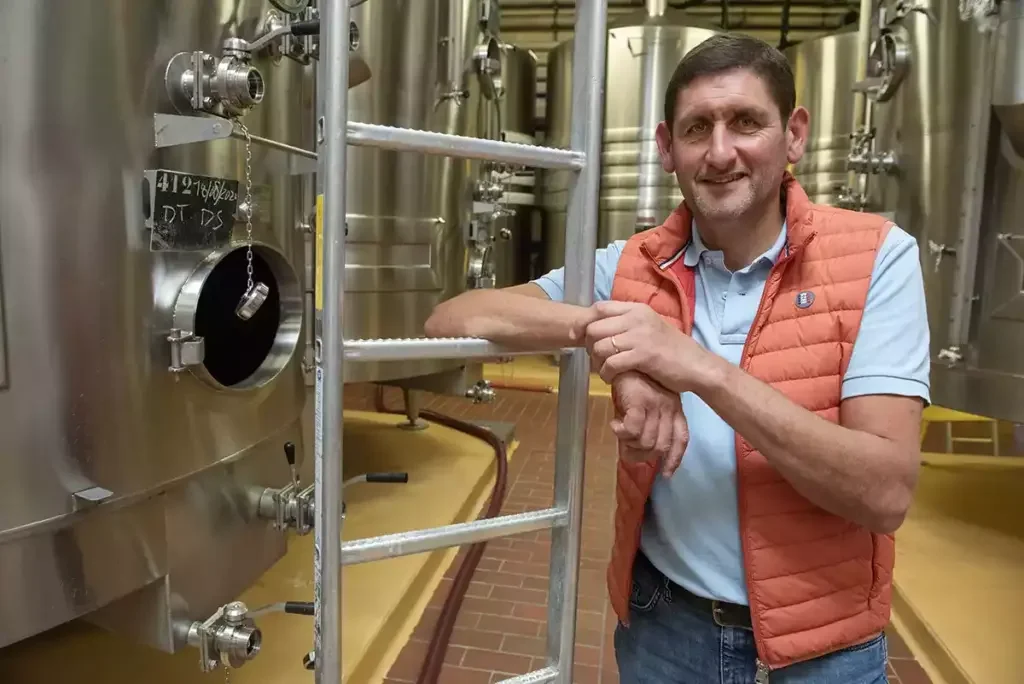
Lambrays grows beyond the clos
If you’re fortunate enough to be funded by LVMH, however, there’s no need to slum it on an industrial estate. It took just two years to complete the winery at Domaine des Lambrays in Morey-St-Denis, in time for the 2022 vintage. Jacques Devauges, who joined the estate as director and winemaker for the 2019 vintage, believes that this spacious, light, and airy Gothic construct—it’s a beauty—accounts for some 20 percent of the final quality of the wine. It’s now kitted out with temperature-controlled cylindrical (not conical) wooden tanks tailor-made by François Frères and fitted with floating caps mounted with inflatable seals. In these, Devauges can make 11 separate cuvées from the clos—to best express the diversity of the terroir—that are later blended. And then there’s an ingenious glass elevator to move everything by gravity. 2022 is the first vintage in recent times in which I feel Clos des Lambrays has fulfilled its potential as a serious grand cru, and no doubt the new winery has contributed.
There’s not only a new winery at Domaine des Lambrays for the 2022 vintage, there are also new vineyards and wines. New, but with history. Three premier cru vineyards located immediately below the château and winery were retained by the Cosson family when they sold the domaine in 1980 to the Saier brothers. These have returned to the domaine. The acquisition includes 0.9ha (2.2 acres) of Clos Baulet, the smallest premier cru in Morey-St-Denis. There are 0.55ha (1.36 acres) of Les Blanchards, which is added to the Morey-St-Denis premier cru called Les Loups. It replaces the fruit from the young vines of Clos des Lambrays, which are now 22 years old and go into the grand cru. Devauges describes the soil in Blanchards as a rich and heavy clay. “It brings tannins that are sticky on the palate. So, now Les Loups is a bit more dense and compact.”
Just across the track from the domaine’s gate lies Clos Sorbé, a slightly warmer site with red soil. “This vineyard couldn’t be closer,” says Devauges. Now, 0.95ha (2.35 acres) has been added to the existing 0.3ha (0.74 acre). All three of the “returned” premiers crus are clos, but in common with Clos des Lambrays (of which Domaine Taupenot-Merme has 0.04ha [0.1 acre]), they are not monopoles, strictly speaking.
This could be an exciting opportunity for Morey as a whole, given that its premiers crus have always been rather overshadowed by its grands crus. I’m hoping that the marketing muscle behind Domaine des Lambrays might bring them greater recognition.
Devauges tells me that Domaine des Lambrays belongs to an elite group of four estates dubbed Vins d’Exceptions within the LVMH portfolio; Château Cheval Blanc, Château d’Yquem, and Colgin Cellars complete the quartet. “The common point is the pursuit of excellence,” remarks Devauges, who discreetly declines to comment on the management styles of corporate owners for whom he has previously worked but says, “Mr Arnault is astute in allowing the managers of all his domaines autonomy. It’s in the DNA of LVMH to allow freedom and creativity.” Whatever it is, it’s producing results. He adds, “Mr Arnault has a brilliant approach. It’s why I like working here so much.”
In an entirely separate deal, in 2021, Arnaud acquired 0.45ha (1.1 acres) of Vosne-Romanée premier cru Les Beaux Monts—one third of which was planted as long ago as 1924—and 0.9ha (2.2 acres) of Nuits-St-Georges premier cru La Richemone. They have become part of the Domaine des Lambrays estate, but quantities were so small in 2021 (about 450 bottles of the former and 600 of the latter) that they will be released with the 2022s in March this year.
Burgundy’s vinous musical chairs
It’s all rather like the party game musical chairs. Who will be sitting on what when the music stops in Burgundy? In this round, Christophe Perrot-Minot found himself without a seat—or almost. His lease of Beaux Monts expired, but he came away with a deal in which LVMH sold him two ouvrées (0.05ha [0.2 acre]) of Richemone. Christophe says, “We don’t know the exact year when the vines were planted, but we assume the age of the vines to be about 80 years old.” These join the vines he already owned here, which are also about 80 years old, to give him a total of 0.6ha (1.5 acres) of Richemone.
As followers of Domaine Perrot-Minot will know, Christophe made two Richemone cuvées. Now there will be just one—Cuvée Ultra—of which there were seven barrels in the ’22 vintage. As for the Beaux Monts (a favorite of mine in the Perrot-Minot range), I am delighted to say that, after tasting the Domaine des Lambrays expression of the 2022 vintage with Devauges last October, he has succeeded in capturing the filigree elegance of this prime Vosne-Romanée terroir. Phew!
We can home in further. Parcels of vines often change hands within families as leases end. When the music stopped at the end of 2021, members of the Gros family in Vosne-Romanée found their domaines slightly altered as an ensemble of leases expired. Domaine Michel Gros gained 0.37ha (0.9 acre) of Echézeaux (Les Loächausses) and 0.41ha (1 acre) of Richebourg (in Les Verroilles ou Richebourgs), and Domaine Anne Gros, some Grands Echézeaux—the legacy of Colette Gros, who divided her parcels between her nephews and nieces, which were managed through Domaine Gros Frère & Soeur until 2021.
Back at Domaine des Lambrays—and just to be accurate, we’re not quite finished with the acquisitions by it in 2021—there is 0.08ha (0.2 acre) of Nuit-St-Georges premier cru Les Cras, enough to make one barrel of wine. “Because it is so small, we cannot sell it through our classical distribution,” says Devauges. “This wine is sold exclusively through the restaurants in LVMH’s Cheval Blanc hotel [in Paris].” There is slightly more (0.18ha [0.44 acre]) of Nuits-St-Georges premier cru—just enough for two barrels, though with the effect of the frost in 2021, Devauges made just one barrel from both parcels together. This was sold as a Nuits-St-Georges Premier Cru to French restaurants. Such are the small reshuffles we rarely hear about, for there is insufficient wine to make a fuss about it.
Even so, you’ll want to clock the grand cru development—0.52ha (1.28 acres) of it—that came about in an entirely separate deal. Ruchottes-Chambertin (another of my favorite grands crus) has been added to the domaine. But don’t get overly excited yet—it is leased until November 2030 to Domaine Frédéric Esmonin. Devauges, however, has cleverly found a metayage (cropshare) alternative to the original fermage (leasehold) arrangement. “Better than paying in money, [Esmonin] pays his rent in grapes of Ruchottes-Chambertin—the equivalent of two barrels,” says Devauges, who vinifies this under a négociant status. So, the plan is to hold back the négoce Ruchottes-Chambertin (roughly 600 bottles per vintage) until 2033, when it will be released with the 2031 as the first domaine vintage. The vintages will be sold in cases of mini verticals. “It’s a long-term project,” exclaims Devauges.
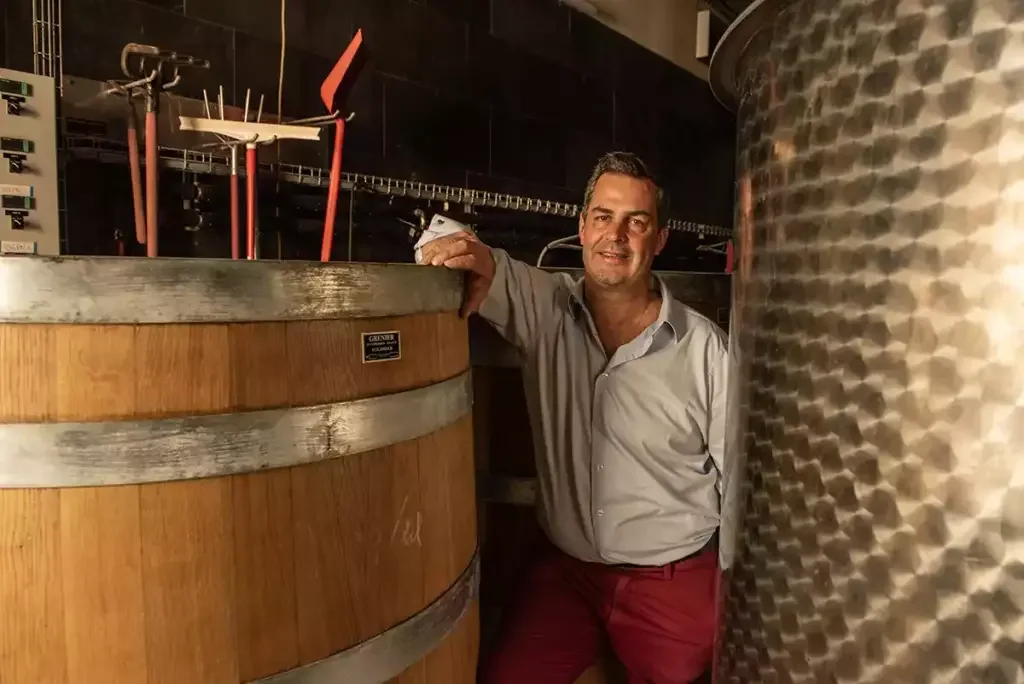
Vosne grandees even grander
So, what else can I report on the vineyard merry-go-round of mergers and leases, sales and acquisitions? Looking back a year or two, those with sufficiently deep pockets to purchase wine from Domaine de la Romanée-Conti will have been delighted as a second white wine joined this predominantly red-wine stable, when in 2018 Domaine Bonneau du Martray leased 2.8ha (7 acres) of its 9.5ha (23.5 acres) of Corton-Charlemagne to DRC, following the sale of Bonneau du Martray to billionaire businessman E Stanley Kroenke in 2017.
Meanwhile, on the leasehold front, Domaine de la Vougeraie, one of the Boisset estates, added Chassagne-Montrachet premier cru Morgeot Clos de la Chapelle to its extensive portfolio from the 2021 vintage, since when general director Sylvie Poillot tells me it has been worked organically. Leased from Domaine Duc de Magenta, it’s a sizable chunk of land (4.57ha [11.3 acres], of which 3.5ha [8.5 acres] is Chardonnay)—and it’s a monopole, to boot.
Staying in Chassagne, 5.7ha (14.1 acres) of Domaine Bernard Moreau were divided in 2020, with brothers Alex and Benoît Moreau going their separate ways after 18 years of working together. I’m familiar with Alex’s wines, which he has made under his own label since ’21. They are good, particularly his Premier Cru Grandes Ruchottes, but I was also impressed with a tasting of Benoît Moreau’s wines last year. This brother has hit the ground running.
In a more dramatic split, the Lamarche cousins Nicole and Natalie broke Domaine Lamarche in Vosne-Romanée in two, with Natalie handing over her division of the spoils to Louis-Michel Liger-Belair in a 50-year arrangement. Louis-Michel describes it as “a kind of metayage contract. We share the income but also the risk.” Liger-Belair will take over farming the vineyards with a strictly biodynamic approach, in line with his other vineyards, which are already certified biodynamic. Why did Natalie Lamarche choose to work with Louis-Michel Liger-Belair? “Because I’m the best!” he replies.
This arrangement adds yet more enviable parcels to Comte Liger-Belair’s Burgundy portfolio, including 0.25ha (0.62 acre) of Echézeaux, 0.3ha (0.74 acre) of Grands Echézeaux, and 0.21ha (0.52 acre) of La Croix Rameau—a tiny premier cru totaling only 0.6ha (1.5 acres) adjoining the bottom of Romanée-St-Vivant, which is divided among three owners. Moreover, it will bring Vosne-Romanée premier cru Aux Malconsorts back to the domaine. This vineyard was sold off in 1933 along with the rest of the estate, including La Tâche and Les Brûlées. 2022 is the first vintage for the new parcels at Domaine du Comte Liger-Belair. Nicole Lamarche, who has made Domaine Lamarche wines since 2013, keeps Lamarche’s grand cru monopole La Grande Rue (1.65ha [4 acres]), next to La Tâche, in its entirety.
To descend a little from such lofty heights, one of my favorite recent vineyard reshuffles in Burgundy is a small swapsie in Chablis between Vincent Dauvissat and Simonnet-Febvre (part of the Louis Latour group). When Vincent Dauvissat’s lease on 0.08ha (0.2 acre) of Chablis grand cru Preuses came to an end in 2021, it was extended in return for a lease in the other direction of 0.16ha (0.4 acre) of Vincent Dauvissat’s premier cru Fôret. This civilized way of conducting business has delivered Simonnet-Febvre a very nice Chablis Premier Cru—800 bottles of Fôret (in an average year)—from vines long tended by Vincent Dauvissat, and we still get to enjoy Vincent Dauvissat’s Grand Cru Preuses. Winners all round.
It’s not just vineyards but whole domaines that have changed hands recently. Charles van Canneyt and his wife Anne-Sophie Gagey (daughter of Pierre-Henry Gagey, former president of Louis Jadot) bought Domaine des Chézeaux in October 2021. Van Canneyt remarks, “The family who sold [it] did not want foreign investors. We managed to finance this 100 percent French project with the help of a bank and guarantees.”
The roll call of Burgundy vineyards owned by the domaine is impressive and includes Chambertin, Clos St-Denis, and the lion’s share of Griotte-Chambertin—all grands crus. It will be managed by the couple separately from Domaine Hudelot-Noëllat in Vougeot, which they also own and run. Domaine des Chézeaux was farmed by three families, including Amélie Berthaut, François Leclerc, and Laurent Ponsot. An accommodation was reached with Berthaut and Leclerc before the 2023 harvest, so the Van Canneyts have made 2023 Griotte-Chambertin, Gevrey premier cru Cazetiers, and Clos des Chézeaux. Van Canneyt remarks, “We hope to find a good solution with Laurent Ponsot for the future.”
Reflecting a glitzy new era in Burgundy
So, does all of this amount to anything beyond fulfilling our natural curiosity to know who’s got what? I believe so—and not least as reflection of how Burgundy has evolved this century. The land of horny-handed farmers quietly tilling their vineyards has receded in the limelight of international attention (see also Roy Richards, WFW 82, pp.116–18). Along the way, Burgundy has changed. We may lament the loss of a traditional way of life, but we can also embrace the change, for somewhere along the line, variable quality and underperforming vineyards and wines have also receded.
Significant evolution is fueled by investment—and whether we like it or not, hefty investment now comes from outside Burgundy, injecting not only money but energy and a fresh perspective. I can fully envisage quality shifting up another notch at Bouchard Père & Fils and William Fèvre, as it has at Domaine des Lambrays—without diminishing what has already been accomplished to date. As Frédéric Weber remarks, “Artémis allows us a long-term vision for the vineyard, with more investment in the vineyard and in the vinification, and more people at each stage. That is really exciting and a source of motivation for my team.”
This century is a new and glitzy era for Burgundy, with a virtuous circle of investment and an increase in the quality and consistency of its wines all the way up the hierarchy—from Bourgogne, to grand cru. Escalating prices are a real concern in Burgundy, and it’s sad that a few wines have become investment vehicles as well. But if the trade-off is a collective improvement in the expression of the terroirs and the quality of the wines, is it not, on balance, worth it? ▉

